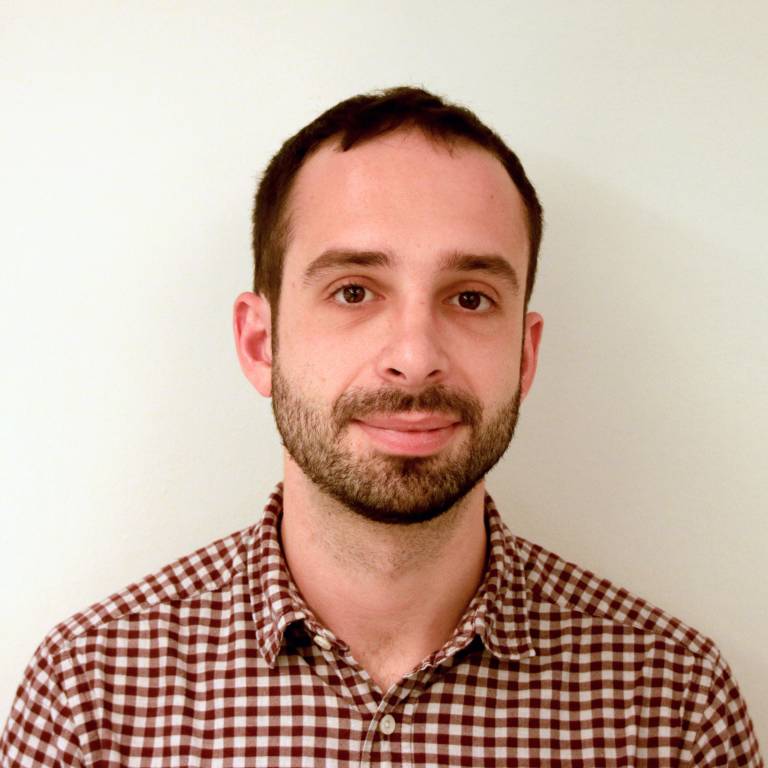Ingo Waldmann promoted to Professor of Astrophysics
5 October 2023
The Cosmoparticle Initiative congratulates Core Staff member Ingo Waldmann following his promotion to Professor of Astrophysics in June 2023

Ingo Waldmann began his career at UCL as an undergraduate in Astrophysics & Planetary Sciences. After completing his PhD in 2012, he went on to become a Senior Research Fellow, an Associate Professor, and now a Professor. He leads the European research Council funded ExoAI group, is AI lead of the ESA Ariel consortium, deputy director of the UCL Centre for Space Exoplanet Data (CESD), and Chief Scientist of Spaceflux Ltd. He has been a Core member of the Cosmoparticle Initiative since 2017.
Congratulations Ingo! What brought you to Astrophysics in the first place?
Thank you! I was always interested in planetary sciences and in particularly the study of Mars and Venus. When I did my undergraduate degree, astronomers realised that our galaxy, the Milky Way, is in fact full of planets. I became interested in extrasolar planets, and I guess one thing led to another.
As a member of both the Centre for Space Exochemistry Data and the UCL Cosmoparticle Initiative, can you tell us how important interdisciplinary work is for you?
Interdisciplinary work is at the core of modern astronomy and astrophysics. Simply put, our data is too complex, and our data sets are too large to be able to do things the ‘traditional’ way. We need to collaborate across many fields to find solutions to how to best analyse data. Hence, the Cosmoparticle Initiative and the Centre for Space Exochemistry Data are important melting pots of ideas.
Your EXoAI project is coming to an end. Can you tell us about its impact, legacy and future?
The ExoAI ERC funding is coming to an end but hopefully the project will endure. The project so far focused on advancing machine learning solutions in the exoplanet field and to push the limits of what we can learn from space-based data such as Hubble and JWST observations. Another aspect focused on building an AI community around the ESA Ariel space mission to help us design the best possible data exploitation strategy possible.
Can you tell us more about your role within the ESA Ariel space mission payload consortium?
The Ariel mission will observe the atmospheres of 1,000 extrasolar planets in its nominal 3-year mission lifetime. Today, we have crude Hubble Space Telescope measurements of around 70 planets. JWST will help and is already providing some outstanding data, but this will not be enough to understand planetary formation and evolution on the large scale. For this you need a large survey like the one Ariel will provide. The problem is, of course, that this data needs to be analysed and interpreted as quickly as possible to have the chance to return to interesting targets within the mission lifetime. Doing so with traditional techniques is difficult but machine learning may help. My role in the Ariel consortium is to lead the AI development efforts for the mission consortium and to build a group of academic and industry experts to help with this taks. Each year we run a machine learning data challenge at a prestigious AI conference (e.g., NeurIPS). We are now one of the biggest physical science AI challenges in the world each year. These challenges help us build the expertise and explore a wide range of AI approaches to tackle each and every aspect of the mission, going from instrument design to 3D climate modelling (https://www.ariel-datachallenge.space).
You co-founded a startup, Spaceflux ltd. Can you talk to us how AI and Astrophysics are intertwined?
That’s a good question. I don’t think that AI and astrophysics are natural partners. Though they should be! Modern astronomy is a big-data field with some of the most complex data there is, yet acceptance of AI approaches has been slow in many fields of astronomy. However, I feel like this is changing now and communities are waking up to the potential that AI holds in solving some of the long-standing bottlenecks in astronomy. Spaceflux is slightly different. Here we search for and characterise man-made satellites and debris orbiting Earth. With mega-constellations such as SpaceX’s Starlink, orbits are getting more and more crowded and dangerous to operate in. This is an excellent area where AI can be applied to help alleviate some of the space traffic.
What is your main research focus for the coming few years?
The future is difficult to predict, but I would like to focus my research towards the application of AI to modelling climates of exoplanets and solar system planets, including Earth. At the moment we have a very limited understanding of the range of climates on planets in our Milky Way and how climates behave in extreme conditions such as those found on hot super-Earths.
What has been the most exciting moment in your researcher’s life to date?
Possibly the discovery of a water-rich atmosphere around the temperate super-Earth/mini-Neptune K2-18b. This news has travelled the globe and, I think, caught us all off guard a little.
What one piece of advice would you give to aspiring Astrophysicists?
Identify what topic you are really passionate about and focus on that. A career in academia is not easy and certainly has many drawbacks but it allows you to follow your curiosity all the way down the rabbit hole.
Links :
Dr Ingo Waldmann's academic profile
The UCL Centre for Space Exochemistry Data (CSED)
Ariel Space Mission – European Space Agency M4 Mission (arielmission.space)
Ingo Waldmann - personal website
 Close
Close

